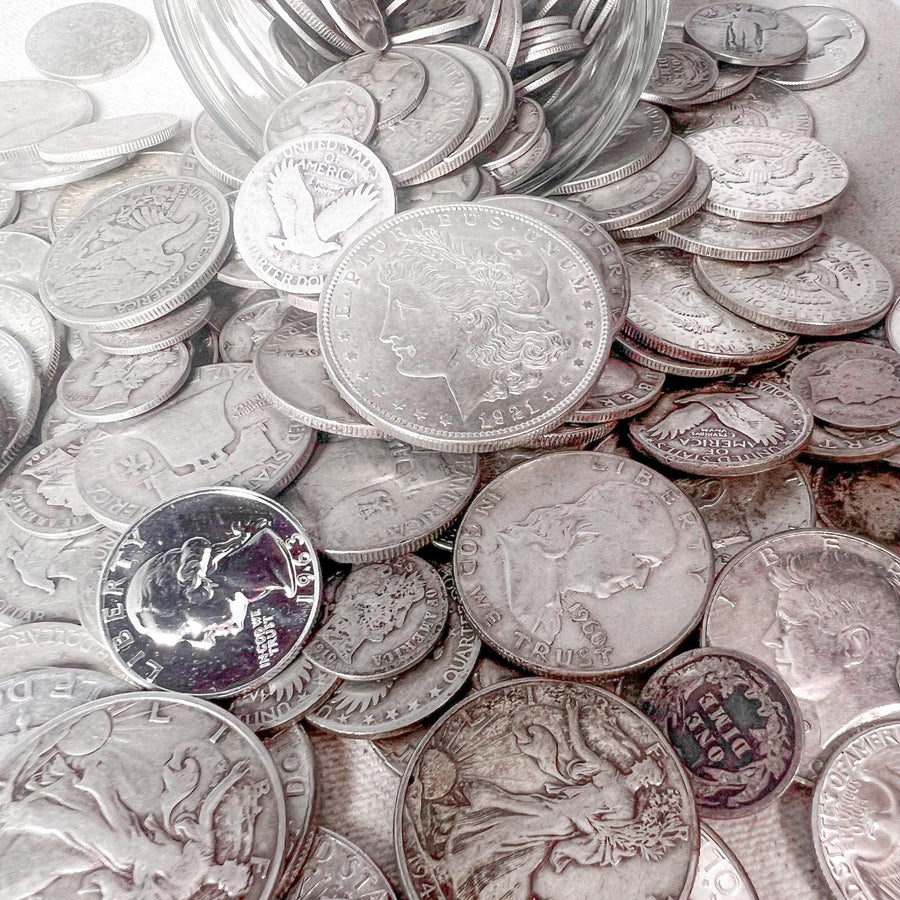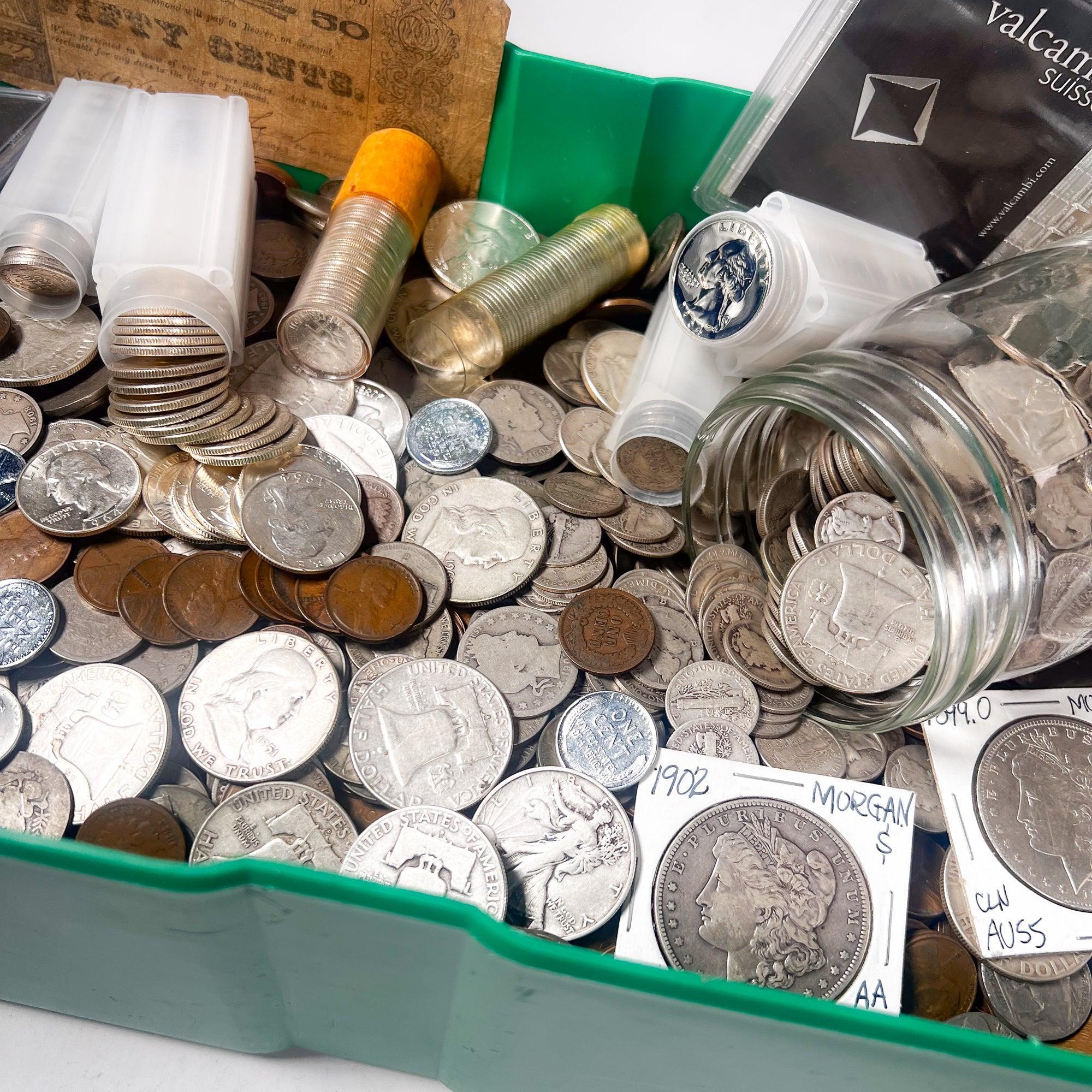Forged in War: The Complete Q&A Guide to the 1943 Steel Penny
Find a "silver" penny in your change jar? If it’s dated 1943, you’ve just found a genuine piece of American history. This isn't just any old Lincoln Cent; it's a direct link to the global conflict of World War II and a testament to the nation's unified war effort.
The 1943 Steel Penny, or "Steelie," is one of the most distinctive coins the U.S. Mint has ever produced. Here at Midwest Precious Metals Exchange, it's a coin we get questions about all the time. Let's dive in and answer everything you need to know about this wartime relic.
What is a 1943 Steel Penny?
A 1943 Steel Penny is a one-cent coin produced by the United States Mint for a single year. Instead of the usual bronze/copper composition, these pennies were struck on planchets (blank coins) made of low-carbon steel and coated with a thin layer of zinc for corrosion resistance.
Why Were Steel Pennies Made?
The answer is simple: World War II. By 1943, the Allied war effort required enormous amounts of copper to produce shell casings, ammunition, and telephone wire. To conserve this critical strategic metal, the U.S. Congress authorized the Mint to find an alternative material for the one-cent coin. After testing various plastics and other materials, zinc-coated steel was chosen.
Are They Made of Silver?
This is the most common misconception about the Steel Penny. Despite its silvery appearance, it contains no silver at all. The shine comes from its zinc coating. It's a humble steel coin, not a precious metal one.
Are 1943 Steel Cents Rare and Valuable?
In a word, no. The U.S. Mint produced over 1.1 billion Steel Cents across all three mints (Philadelphia, Denver, and San Francisco). They are very common, and a circulated, worn-down example is typically worth only 15 to 50 cents.
However, the value is highly dependent on condition. Because the steel core was prone to rust and the zinc coating wore off quickly, finding one in Brilliant Uncirculated (MS) condition is much less common. These pristine examples, with bright original luster and no rust spots, can be worth several dollars or more.
How Can I Tell if My Steel Penny is Real?
The easiest way to verify a 1943 Steel Cent is with a magnet. Since the coin is made of steel, it will be strongly attracted to a magnet. Copper pennies will not. This is a great way to quickly distinguish a real Steelie from fakes or altered coins.
Why Does My Steel Penny Look Rusted or Dark?
This was the coin's fatal flaw. Once the protective zinc coating wore off, the steel core underneath was exposed to the elements and began to rust, just like any other piece of steel. Furthermore, the zinc itself would often corrode, leading to a dull, dark gray, or splotchy appearance. This is why finding a truly "white" or lustrous Steel Penny is a treat for collectors.
What Should I Look for When Collecting Steel Pennies?
When adding a Steel Cent to your collection, you want to find the best-preserved example you can. Look for:
-
Original Luster: A shiny, almost chrome-like surface.
-
A Strong Strike: Clear, sharp details on Lincoln's portrait and the wheat stalks.
-
No Rust or Corrosion: Avoid coins with black or orange spots.
What is a "Replated" Steel Penny?
Because so many Steel Cents became dull or rusted, some third parties have taken to stripping the original zinc coating and replating them to make them look shiny and new. These "reprocessed" coins have no numismatic value to serious collectors, as they have been altered from their original state. An original, lustrous Steel Cent will always be more valuable than a replated one.
Did They Make Steel Pennies in Other Years?
This is where things get interesting for advanced collectors! The official answer is no, steel planchets were only supposed to be used in 1943. However, a few leftover steel planchets were accidentally struck with 1944-dated dies at the Denver and Philadelphia Mints. These 1944 Steel Cents are incredibly rare and valuable error coins.
Is the Famous 1943 Copper Penny Real?
Yes! Just as a few steel planchets got stuck in the 1944 production run, a few bronze (copper) planchets from 1942 were left in the minting hoppers and were struck with 1943 dies. A genuine 1943 Copper Penny is one of the most famous and valuable rarities in all of American coinage, often selling for hundreds of thousands of dollars.
An Essential Piece of History
The 1943 Steel Cent is more than just an oddity; it's an affordable, tangible piece of the American home front story. Every citizen who used one was reminded of the war effort and the sacrifices being made overseas. It's an essential coin for any U.S. history or coin collection.
Ready to add a piece of WWII history to your collection? Explore our selection of Wheat Pennies, including wartime Steel and Shell Case Cents, and find the perfect coin for your collection.
Shop our Wheat Penny selection at Midwest Precious Metals Exchange!












